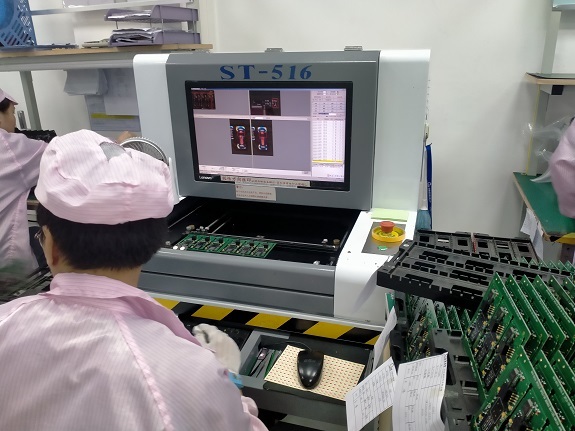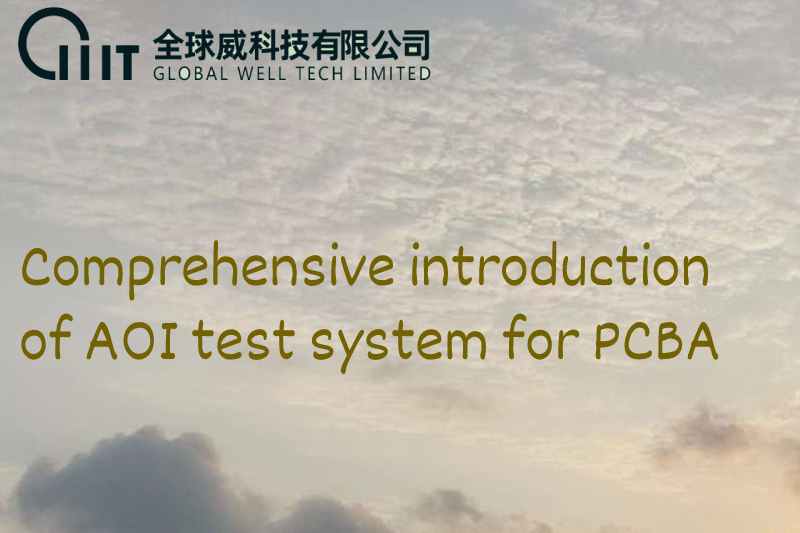PCBA testing
Introduction of AOI test system for PCBA
Introduction of AOI test system for PCBA Board
The precision of PCBA board plays a crucial role in the functionality of electronic equipment. However, this precision also poses a risk of potential failures. Defects can lead to production delays, increased costs, and most importantly, negatively impact our brand image.
To mitigate these negative effects, it is imperative to implement strict testing protocols throughout the PCBA process, including the use of automatic optical inspection (AOI). AOI is a critical PCB testing method that allows us to detect defects in PCBA boards and ensure they meet the required standards. This article aims to provide a more comprehensive explanation of the AOI test and its importance in PCBA board production. The picture below shows two AOI detectors used in the assembly workshop of GWT.

Figure 02-AOI Testing offline

Figure 02-AOI Testing online
What is AOI Inspection
In PCBA production, manufacturers often employ various testing methods to ensure high-quality products. One such method is AOI optical inspection,which is a type of visual inspection that uses advanced equipment to scan the produced board and compare it with the correct PCB to detect any defects or failures in the PCB board and other electronic components. PCB optical inspection is a critical step in the entire service process, including manufacturing (pads, interlayer connections, surface quality, etc.) and assembly (SMT assembly and through hole PCB assembly).
The Necessity of Automatic Optical Inspection of PCB
In recent years, the PCBA industry has made significant strides in manufacturing, assembly, and testing technologies, resulting in improved production capacity and more complex circuit structures. As surface mount technology continues to advance, electronic PCBA boards have become increasingly smaller and more sophisticated.
Given the increasing complexity of PCB boards, manual PCB inspection is no longer a viable option. The majority of issues are typically located in the thousands of soldered joints present on even the most typical boards. Despite the fact that manual inspection can occur at any point in the manufacturing process and provides instantaneous results, its efficiency is not high. Even the most experienced inspectors can become fatigued and prone to improper inspection due to the high density of solder fillets. Empirical evidence has shown that this detection method is not reliable, and opting for manual inspection as a cost-saving measure may lead to pcb board failure, resulting in significant losses. Therefore, AOI solder fillet inspection will completely replace manual work, with manual inspection serving as an auxiliary inspection solution.
To meet market demands for fast turnaround and high quality, reliable and efficient testing technology is necessary to ensure and improve production levels. AOI Inspection PCB is an integral part of an integrated electronics test strategy that optimizes costs by identifying issues early in the production process. One solution to this challenge is the implementation of automated or automated optical inspection tools. After the soldering process, AOI(automated optical inspection) equipment can be incorporated into the production line to detect and flag issues at an early stage. This early intervention is critical, as detecting issues deeper in the production process is more costly and time-consuming to correct. Furthermore, early manufacturing difficulties with soldering and PCB assembly can be identified and feedback provided in the early stages to ensure timely resolution. This approach enables rapid response to ensure that problems are detected and addressed immediately, preventing the production of boards with the same problem.
Features of AOI detection
1.High precision: AOI inspection equipment is capable of detecting subtle defects that are as small as a few microns, while minimizing inaccurate inspection results that may occur due to human errors.
2.High efficiency: The automated inspection process is more efficient than manual inspection, allowing for faster turnaround times for PCB assembly.
3.Flexibility: AOI testing offers greater flexibility, as the inspection process can be stopped or started at any time, and manufacturing or assembly settings can be immediately adjusted if a problem is detected. The equipment can also be configured and adjusted to meet specific production line requirements.
4.Recording and tracking: The inspection system is capable of recording the inspection results of each PCB and tracking the occurrence and resolution of problems, allowing production lines to identify the root cause of quality issues and improve the production process.
5.Versatility: AOI system is not limited to detecting basic surface defects and missing components; it can also identify solder voids, incorrectly shaped connectors, and PCB component orientation issues.
6.Multiple options: A variety of reliable AOI inspection equipment brands are available for manufacturers to choose from, including both 2D and 3D options.
7.User-friendly: The inspection machine can generate comprehensive inspection reports to reduce the workload of engineers and improve project operability.
Summarize
In conclusion, AOI is a highly advanced technology that seamlessly integrates optics, mechanics, electrical control, and software to replace manual inspection. With the growing trend towards smaller and more complex PCBs, even the simplest board can have thousands of soldered components, making it crucial to utilize AOI in today’s competitive PCBA production environment. By continuously evaluating production quality and making necessary corrections to the process flow, AOI helps companies achieve cheaper production costs, reduced waste, and increased yields. Investing in AOI systems can provide a significant advantage to businesses seeking to enhance their manufacturing capabilities and remain competitive in the industry.
0users like this.



